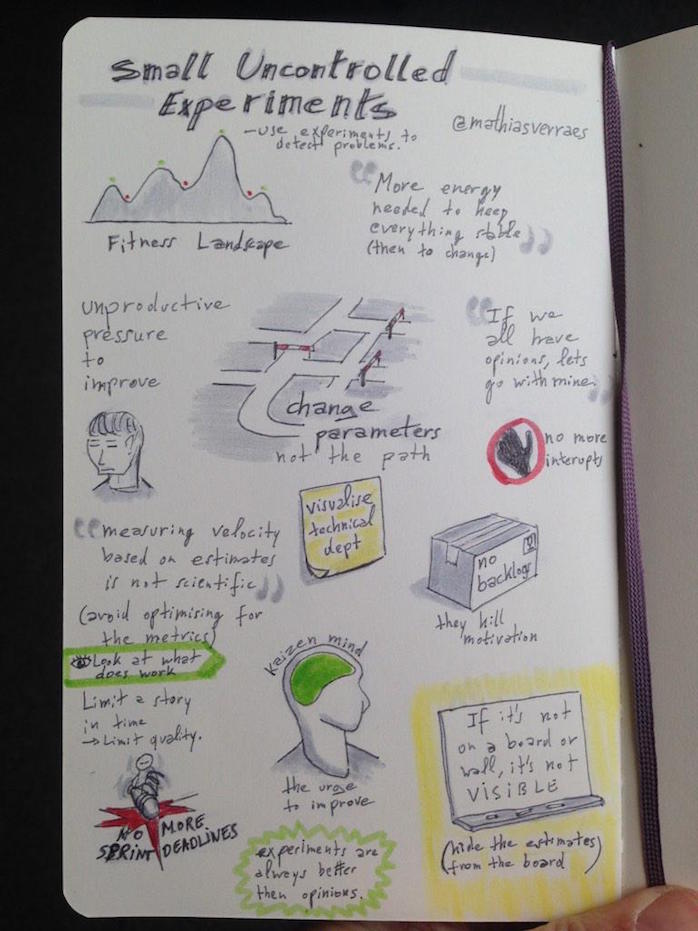My blog post on Small Uncontrolled Experiments landed me an invitation to speak at Agile Cambridge. As the slides are probably not that useful if you haven’t seen the presentation, I advise you to read the blog post instead.
Update 2021-01-25: I used to call this “small controlled experiments”. It was a name that grew organically and it stuck. Nowadays, I believe they’re very much uncontrolled: a team is too small and a sprint is too short for anything remotely scientific. That doesn’t mean they’re not valuable. Emotions are data, and if people’s gut feeling after (after, not before!) doing an experiment doesn’t agree, the proposed change will not work well anyway. Impose time constraints on these experiments, but do allow them to be uncontrolled.
See the slides on Speakerdeck
Abstract
The project was of to a bad start: an inherited legacy codebase, a waterfall contract, and a projected loss. The promise of Kaizen or Continuous Improvement seemed very appealing. But when we tried to incorporate this into our process, it didn’t catch on. Biweekly retrospectives didn’t seem to expose any problems we could improve upon. The ceremonies we tried, like Deming’s Plan-Do-Check-Act cycles, added too much overhead. We were doing something wrong.
Continuous Improvement implies that you know exactly where to focus your efforts. Like scientists, we started to experiment, without deciding upfront what we expected the outcome to be. The rules? Make every experiment as small as possible. No meetings, no consensus, no cumbersome evaluation process. We let the results speak for themselves. This talk explores the successes and failures of a team that went from survival mode to learning mode over the course of a year.
Peter Decuyper drew this while I gave the talk at PHPBenelux 2015:

Read more
The original blog post on Small Uncontrolled Experiments
